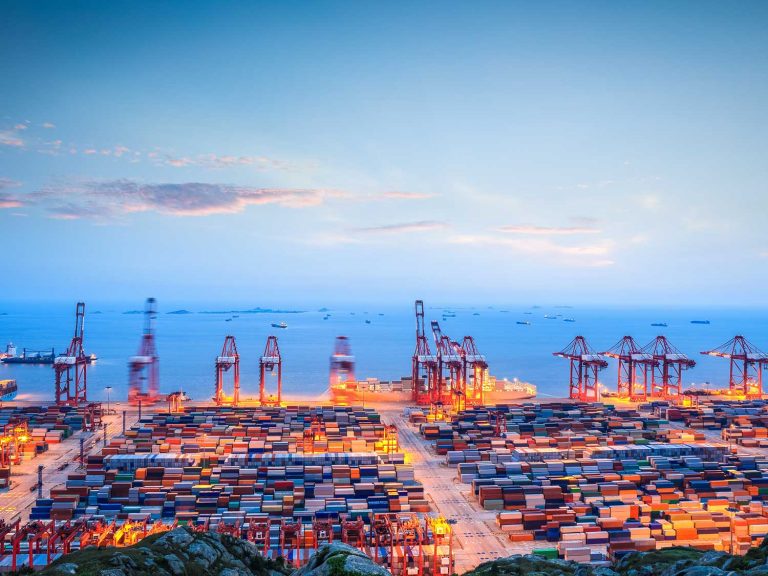
Date:
Blanked Shanghai sailings slow to materialise
As Shanghai enters the fourth week of an indefinite lockdown, container shipping lines are skipping calls at main Shanghai terminals, with more blank sailings anticipated as vessels waiting at Chinese ports double.
Until the lockdown situation is resolved, which appears challenging when putting the Omicron variant against zero-tolerance, we expect drops in export demand, port omissions and more blank sailings, as well as Shanghai-bound cargo increasingly being discharged elsewhere, while trade press reports that the number of container vessels waiting outside Chinese ports has grown by 195% since February to over 500 vessels in April.
Some carriers, including Maersk, have already stopped accepting reefer and dangerous goods cargoes into Shanghai and while the port remains operational, the severe shortage of trucking capacity means the port is slowly being filled with import cargo that cannot be collected, while widespread factory closures are likely to hit export volumes.
Ocean Network Express (ONE) confirmed that trucking remains limited, with terminals congested and while reefer yard plug capacity remains stressed, there is a possibility that reefer containers may not be discharged in Shanghai until the situation eases.
In Hong Kong the number of new COVID-19 cases dropped below 1,000 on Friday for the first time in more than two months, but Shanghai could be facing a protracted lockdown, as more new cases continue to be reported.
China has been keeping ports operational during lockdowns using a closed loop system where the workers live on site, but container yards have grown congested as trucking capacity has dropped.
Compared with the shutdown at Shenzhen’s Yantian port last July, the Shanghai lockdowns have not yet resulted in widespread blank sailings on Asia-Europe, trans-Pacific or Mediterranean services.
In Shanghai in 2022 there was a small initial blanking spike, which was entirely driven by demand to America’s East Coast, prior to the lockdown, as a result of general market turmoil and the level of blank sailings has since dropped below the 2021 level.
According to current carrier schedules there is a slight reduction in the number of blank sailings, though this is likely to reflect the carriers not yet knowing, or at least not publishing the updated schedules of the sailings they will have to blank.
The shipping lines have been cautious in blanking sailings following lockdowns, but not loading as much cargo as planned in Shanghai and not blanking any capacity could erode export freight rates, so shippers should anticipate an increase in blank sailings in the coming weeks, should the Shanghai lockdowns continue.
Lockdowns are limiting available labour for factories and supply chain infrastructure, with reports of empty-container depots being shut, and even where they are open, there is a lack of available equipment. Particularly in the north, affecting the ports of Ningbo, Qingdao, Shanghai and Tianjin.
With bookings from China significantly reduced for the coming weeks, there are bound to be more blank sailings and not just for the lack of exports, but also the operational headaches with not being able to discharge import reefer and dangerous goods containers at some terminals.
Despite talk of a “slight easing” of restrictions in Shanghai, the number of new cases of omicron continue to rise, which means the government’s strict general lockdown measures are likely to continue.
Regardless of the challenging situation in Shanghai, we are working closely with our network partners, carriers and own offices across China, to monitor the local and regional situation and find solutions for our customers, including time-sensitive shipments.
The situation develops continuously and we will keep you updated as new intelligence and insights are received from our colleagues in China.
We maintain long-term contracts with airlines, carriers and shipping lines that secure space and rates, to provide the best alternatives and options, whatever the situation.
